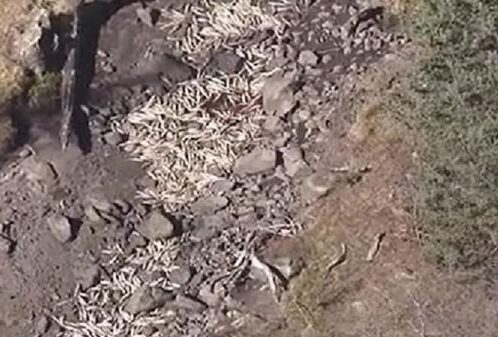Jeremy Willemse discovered thousands of dead fish near Fish Lake downstream from Johnson Reservoir while hunting recently, something he called, “mismanagement in my book for sure.”
According to ksl, Richard Hepworth, aquatic manager at the Utah Division of Wildlife Resources, said this was part of the expected outcome of necessary construction. They tried to minimize the impact, though.
They needed to lower the water level to assess a structure that functions as the reservoir’s drainage system.
Hepworth said, “Nobody really had a great idea what it even looked like or how it was built or what parts may need to be purchased.” And to know how to fix it, they would have to see it. The last time anyone looked at the structure was when it was installed in the 1960s.
“There’s not a lot we could’ve done really,” Hepworth added, saying the impacts were not a fun thing for anyone to see. Notwithstanding, the DWR did what they could to minimize the piles of dead fish.
Knowing the project was going to cause environmental impacts, a crew of 10 people worked almost 10 days to net about 100 tiger muskies, which they relocated to Navajo Lake.
The rest of the fish around Johnson Reservoir were mostly rough fish and Utah suckers. These kinds of fish had been problematic in the past, and “there wasn’t a good reason to save them.”
– The Byway
Feature image caption: Thousands of dead fish downstream from Johnson Reservoir. Courtesy ksl.

